Car insurance is one of the oldest and most popular fields of the insurance industry. Given the prevalence of vehicle policies, insurers can access a plethora of opportunities by mastering the digital world and exploring their options online. In the last decade, insurers have begun to do just that, and the insurance industry landscape has changed markedly. More and more...
The e-learning niche is not particularly new for the global customer. It was growing before the pandemic, with a value of $138 billion in 2019, and is projected to reach $404 billion by 2025, according to the Holon IQ report “Sizing the Global EdTech Market.” Although the latest market trends were unfavorable for many industries, they provided an extra boost to online learning and made entrepreneurs take a closer look at the sphere.
Apart from that, one can’t deny that technology diversifies traditional education and becomes the teacher’s most advanced helping tool. So, how to create a successful educational app for iOS or Android is the question. There’s no better time to tackle this subject than now.
Continue reading to get a full overview of the e-learning world: the market’s state, niche peculiarities, and the most important things to consider before you create an educational app of your own.
Edtech Industry Overview: Numbers, Trends, and Market Players
Here, we’ve gathered all you need to know about the current state of affairs on the e-learning market, including some important statistics.
Online Learning Stats to Keep in Mind
Tech advancements are becoming increasingly useful for students of all ages, and this is pushing forward the whole educational industry.
We see now that edtech tools are transforming education for pre-K, K–12, higher education, and the workforce. Online learning and remote offices are encouraging people to adopt e-learning more actively than ever before.

According to Holon IQ, a platform that provides data and analysis of developments in the global education market, the pandemic gave an extra kick to the e-learning market growth: the CAGR predictions went up by 3.3 percent, and the market size rose by $63 billion.
The growing demand requires more innovative solutions that will make education engaging and effective at the same time. It’s fertile ground for several tech trends that we list below.
Edtech Industry Trends
Check out the innovations that are creating the education of tomorrow.
-
Extended reality
Augmented reality (AR), virtual reality (VR), and all possible combinations of the real environment with technology form the extended reality (XR) niche.
This kind of learning experience is becoming available to more people due to the price drop for VR headsets: by 2023, VR headsets are expected to cost around$200.
This trend provides students with the most engaging visual experience, literally placing them in the educational environment. And while many schools would consider adopting extended reality a costly undertaking, it can save money by eliminating the need to purchase physical educational objects for classrooms.
-
Homeschooling
Even though home education is considered to be a traditional practice, it has gained in popularity since 2019. For example, there were 2.5 million home-educated students in the United States in 2019, and two years later, there are 5 million such students.
This paved the way for new startups aiming to facilitate the educational process for students, their parents, and teachers.
-
Artificial intelligence
AI provides a host of useful tools for education, including interactive interfaces, voice assistants, chatbots, individual learning profiles, and assessment tools.
With these solutions, students get fast feedback from the system (which is important for higher engagement) and an individual approach, while teachers can optimize the learning process as a whole.
-
Gamification
While it’s been used for years, gamification now enjoys its prosperity with modern technologies. Playing games is something we know from childhood, and thus, it breaks the pattern of hard learning. We are better able to understand and remember new information we learn in the form of play than when we spend hours reading textbooks.
-
Massive open online courses (MOOC)
Looking for ways to upskill and adapt, adults are turning to well-known education platforms like Coursera and Udemy. For instance, Udemy reported a 425 percent global increase in course enrolment, and it happened in around one month between February and March 2020.
Top 5 Educational Apps as of Now
Here they are —five apps that are globally approved by thousands of users. Each of them has a unique set of features that changes the educational industry as we know it.
-
Language learning: Duolingo
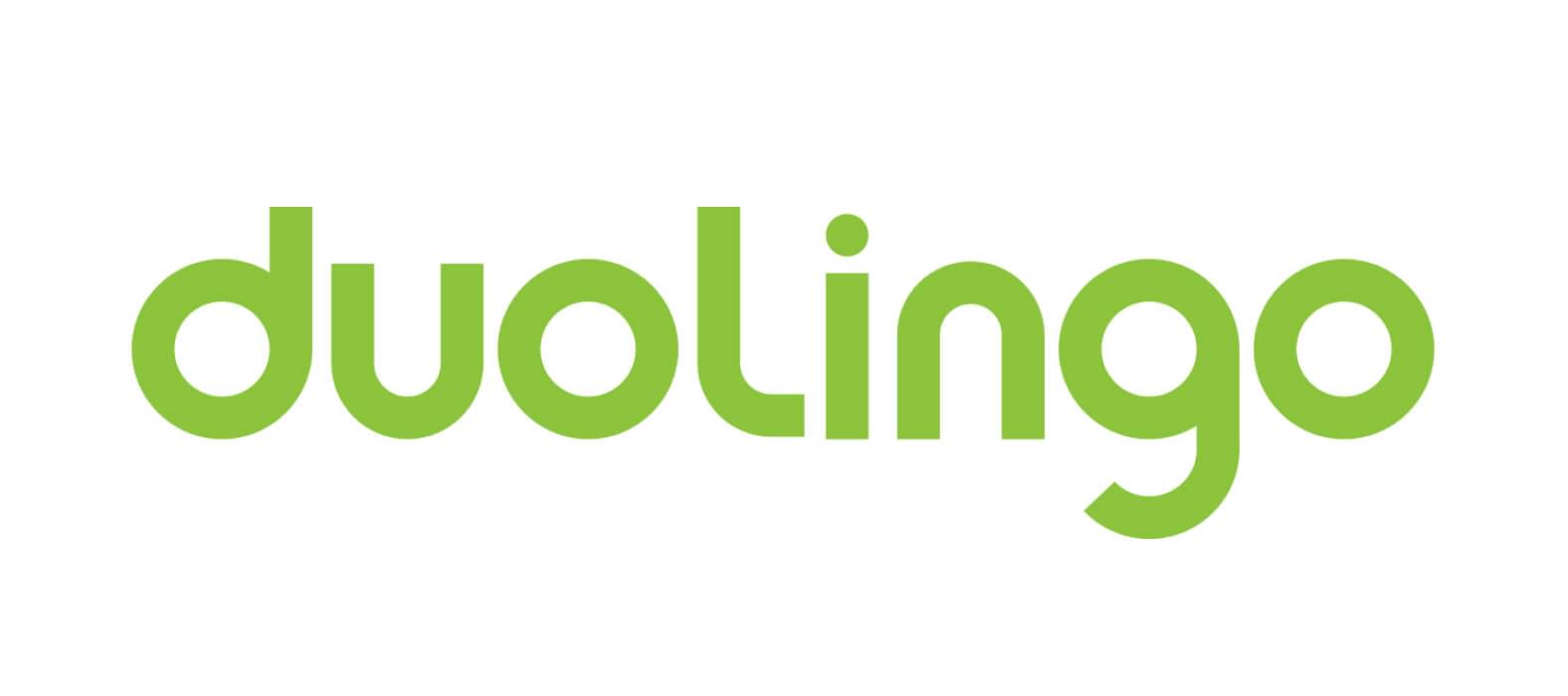
Key features:
- Lessons based on gamification and funny characters;
- Rewards, achievements, and leaderboards to motivate students;
- Lessons created in collaboration with teachers and scientists;
- Forums to discuss lessons and emerging questions.
Duolingo is the most famous language learning app, and it uses different gamification features to make learning engaging and entertaining. Users get a wide range of languages to choose from: English speakers have access to 35+ language courses. The studying includes reading, writing, speaking, and listening exercises to ensure the most effective result.
-
AR: GeoGebra

Key features:
- Derivatives and integrals calculation;
- Identification of special functions points: min, max, roots, etc.;
- Geometric construction creation;
- Length, perimeter, and area measurement;
- Ability to save and share the results.
GeoGebra provides several solutions for effective math learning, but we’re particularly interested in the company’s 3D calculator. It allows users to solve math problems in a 3D mode and then place objects on any surface around them. Some even use this app to create abstract 3D art.
-
Learning management system: Canvas

Key features for students and teachers:
- Checking grades and courses in full;
- Updating a course;
- Providing feedback and grading;
- Assignments submit;
- Messaging and discussions;
- Study management with a calendar and to-do lists;
- Video content support;
- Push notifications.
Now well-known by students and teachers on a global level, Canvas is a great example of a well-functioning LMS. There are numerous similar solutions on the market, and they will always be widely used because of their broad capacity. Students can view the course content, check grades, message within the app, watch videos, create to-do lists, etc.
-
Gamification: Kahoot
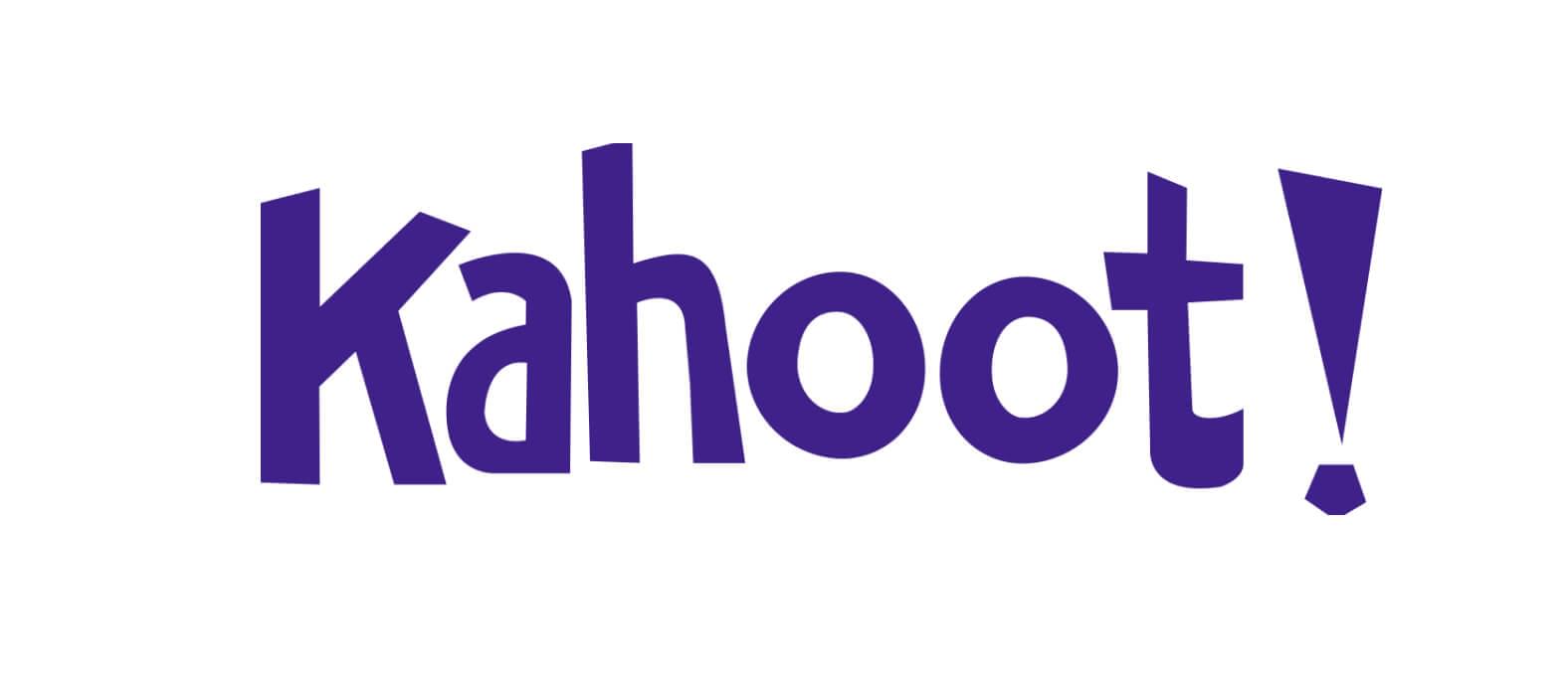
Key features:
- Creating and sharing kahoots (quizzes) of any kind with the ability to add images and videos;
- Joining live kahoots;
- Ready-made kahoots on different subjects, considering the user’s age;
- Several study modes available;
- Study leagues for motivation;
- Reporting for teachers.
This might be the best way to make quizzes stress-free for students and incorporate learning something new into everyday life. On the one hand, the app can be used at school: teachers can find a ready-made test (kahoot) or create a new one themselves. At the same time, people of any age can take quizzes for fun and engage their families (both kids and adults).
-
AI-based: Brainly
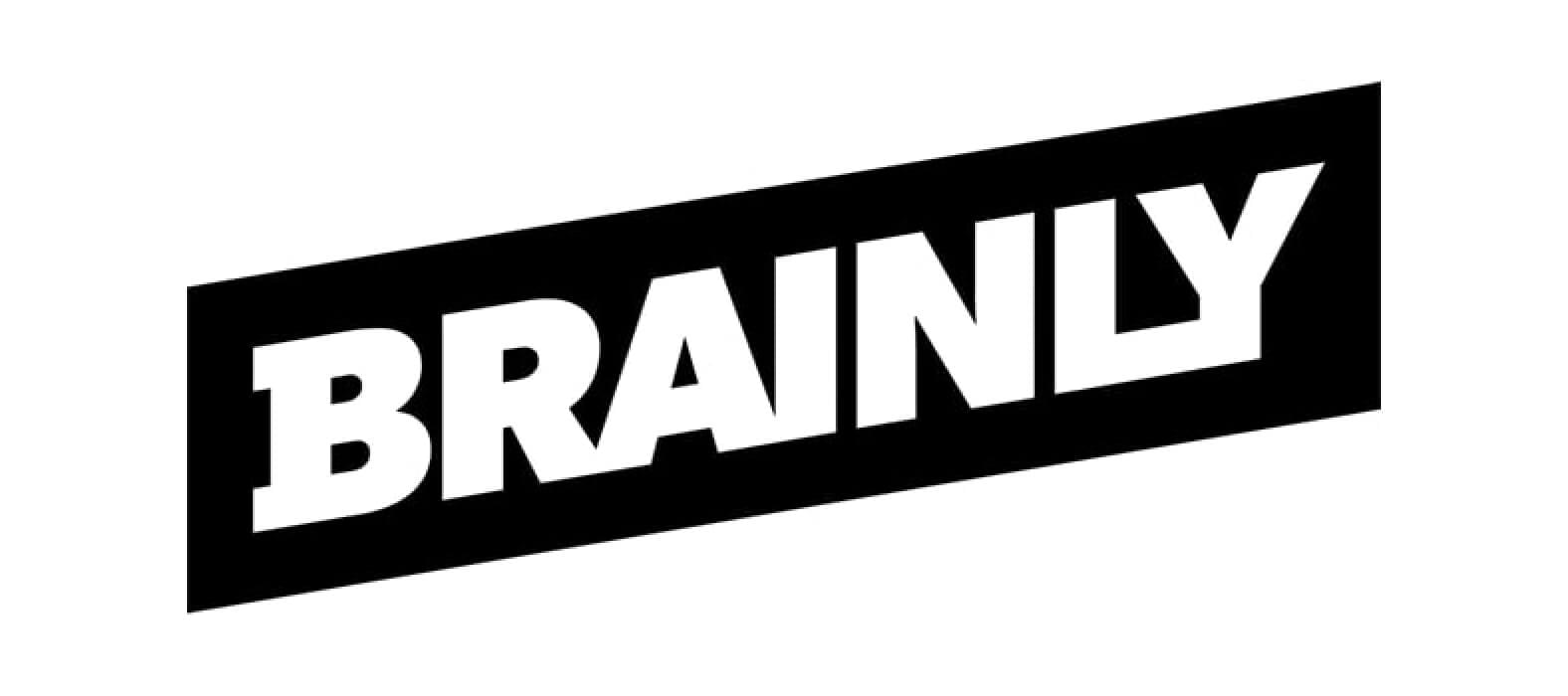
Key features:
- Ability to ask the crowd questions on any school subject with voice, text, and images;
- Opportunity to contact experts directly;
- Content verified by experts and moderators;
- Pairing accounts for parents and children.
First and foremost, this isa platform where anyone can find an answer to her question on school subjects, including math, chemistry, history, biology, and others. The crowd is here to help: users can both ask questions and help others by providing answers. The advanced AI features include scanning math problems and asking questions with voice or pictures.
Good to Know: Benefits and Challenges of Educational Apps
A proper educational tool benefits three groups of customers: teachers, students, and business owners (e.g., employee training). How exactly does it happen?
Benefits for students:
-
Immersive learning
Any class can be successfully upgraded with technology, engaging students on a deeper level. Imagine virtual tours to the mountains or historical events — it has an immediate effect on the audience.
-
Easy information access
Huge libraries can be placed in the learner’s smartphone with ease. Plus, the content’s format may vary from books and articles to video tutorials, presentations, or live forums.
-
Stress-free learning process
Education is now more fun than ever with modern tools. Students don’t have to hide their phones or tablets — instead, they may continue using them and get smarter at the same time. Gamification elements create a more relaxed environment for students to pass tests or learn new information.
-
Collaborative environment
Edtech boosts collaboration in myriad ways — from connecting students and teachers in different parts of the world to easing the workflow of group projects.
Benefits for teachers:
-
Individual approach
While technology gathers test results and feedback from every student, teachers have more time to focus on the students’ progress and provide them with individual tasks. Edtech apps can even suggest individual plans themselves, and teachers only have to adjust them.
-
More ways to engage learners
A crowd of distracted students in the classroom who get bored in minutes must be any teacher’s nightmare. Technologies allow for combining traditional and modern education to grab the audience’s attention with a completely new experience.
-
Room for creativity
The number of tech tools at hand allows teachers to sculpt unique lessons that bring students the most effective results, considering the learning pace of every participant.
-
Transparent communication
Online platforms give way to communication between teachers, students, and their parents, ignoring time limits or classroom walls.
Benefits for business owners:
-
A competitive advantage
Well-trained employees who know the latest market trends become one of the most valuable resources on competitive markets. By investing in modern educational tools, entrepreneurs contribute to business strategic growth.
-
Time and cost efficiency
Technologies make education available anywhere, any time. Business owners cut their expenses for teachers and venues, while employees get unlimited access to the course and knowledge base.
-
Sustainability
Eco-responsible companies will appreciate that no printing or paper books are needed — e-learning platforms function in a fully digital environment. Technology leaves a way less harmful footprint than traditional education methods.

Challenges of modern educational apps include:
-
Lack of social interaction
Any digital instrument decreases the social aspect of education to some extent: students are less (or not at all) involved in communication with teachers or each other.
-
Access to the Internet
Even though the Internet is a part of people’s daily routine in developed countries, it remains a problematic issue for some other regions. As of January 2021, the global Internet penetration was 59.5 percent, but such countries as Liberia, Niger, and South Sudan have the lowest penetration rates (not higher than 14.9 percent).
-
Advanced devices
The latest edtech products look awesome on the screen and amaze users with their capabilities, but at the same time, their use may drain the batteries of regular smartphones and tablets. Subsequently, learning becomes incomplete and fragmented.
-
Lack of mentorship
If users pick an online course, they watch videos and read tutorials, but when it comes to practice, there is no one there to guide them. Thus, people spend time on courses, but in some cases, they can’t be sure that acquired skills are 100 percent valid.
-
Emerging demands on schoolteachers
Edtech requires new skills from teachers who are used to traditional education methods. And while tech tools continue upgrading, teachers have to keep up with the pace and devote time to learning and providing the latest edtech trends.
What Are the Most Popular Educational App Types on the Market?
Now when you know edtech trends, it’s time to figure out what types of e-learning apps are the most welcomed on the market at this moment.

Examples: Skillshare (creative skills), edX (university knowledge), Teachable (to find or create a course by oneself) This kind of app is used by people all over the world for self-development or professional growth. A person can start with a short course on gardening and end up learning a programming language — any information is available on the online course platforms. Online courses primarily use video and text content for tutoring, but features may also include gamification and engagement elements for better understanding.
Examples: Brainscape, Memorize By Heart, MemoCoach Such apps are usually focused on visuals and a flash card method for memorizing different kinds of information. They can be used by learners of different ages and for different purposes. Brainscape, for example, allows users to create their own cards or turn to the ones available on the platform.
Examples: Evernote (to organize notes), Exam Countdown (exam tracking and organization), TCY (online tests) Exam preparations include more than just day-and-night cramming— technologies can help students manage their time, improve their focus, organize their study materials, etc. Test-based applications usually have access to massive knowledge databases and dictionaries on different subjects.
Examples: Flipboard, DailyArt, Merriam-Webster Dictionary These are apps that provide knowledge on one or several subjects. In this case, user-friendly data organization plays the main role in the user experience. Users should quickly find what they need and enjoy some personalized content according to their interests.
Examples: Khan Academy Kids, BrainPOP Jr., Moose Math Educational apps can develop a passion for learning by providing just what younger kids need: bright colors, cartoon personages, cheerful music, and many more. It’s not just simple cartoon watching — kids become a part of the interactive game and learn new skills every day.
Examples: Epic!, Articulation Station, Proloquo2Go This app type is known as part of the special education niche. For now, it is probably the least-developed edtech app category but is still vitally important. It includes applications for kids with communication or reading challenges, autism, and other unique needs.
5 Ways to Monetize Your Educational App
So how do edtech startups earn their money? Here are some working monetization practices to consider before you start an education mobile app.

Some extra (and captivating) paid functionality is a great way to financially support your business. You should consider several features that add value to your main offering and go beyond basic MVP ideas.
This method is one of the most popular ones in education application development. It’s better to offer several subscription options that give users freedom of choice (for example, free, standard, and VIP subscriptions).
This strategy is appropriate if your platform provides user-generated content like online courses. You have two options: either charge a commission for publishing a course or for every course enrolment.
This means users make a one-time payment and enjoy the full range of features. To build trust with your customers, offer them a free trial period to test out a product before purchasing.
This option could be annoying for users, so consider it carefully. Obviously, it’s the easiest way to monetize a free application, but you should keep in mind advertising policies, especially if you create a learning app for kids or K–12 students.
What Are the Basic and Advanced Educational App Features?
Here you’ll find a fundamental list of features to include when you develop a learning app. Basic functionality refers to MVP development, while a combination of advanced features creates a unique application.

Basic Features
- Sign-up. This is the very beginning of the user journey, so make it as simple as possible. It all starts with an email and a password, plus sign-up with social media: Facebook, Google, Apple ID, and others.
- User profile (dashboard). In this section, users can add more details to their profile (age, gender, photo, etc.), review courses they’ve created or taken part in, check their studying plans, review their grades, and more.
- Search. Make sure users can easily find a specific subject or topic. In this case, the search feature should be easy to find and provide search filters.
- Course (details and creation). The course creation process should be intuitive and give educators hints on what to include in the description. The best-case scenario is to have a course template for teachers to modify at their own discretion (for example, add or remove certain blocks, videos, visuals, or customize the background color).
As a result, when future students appear on this page, they should clearly understand its goals, tasks, program, and final results. After that, help a user to confirm her choice by including “Payment,” “Start a trial period,” or “Start a course” buttons here.
- Payments. Users expect payments to be fast, understandable, and secure. To ensure you meet this standard, add common payment options like PayPal or Visa/MasterCard.
- Course menu. After the course is chosen, students can visit a menu to check the list of lessons, their topics, upcoming assignments, and grades. In other words, this is a place to organize the whole educational process.
On the teacher’s side, it should be a dashboard with the participant list, their individual progress, and class statistics. Also, teachers should get access to accomplished tests and grade them from this page.
- Test creation. Provide tutors with several test options and make the navigation process simple and intuitive. It should be clear how to change the test type, add visuals to the question, and review changes before publishing.
- Push notifications. Students prefer to be informed on grades and course updates, while teachers want to know about new students on their course and finished assignments. Increase user engagement by providing an opportunity to customize notification preferences.
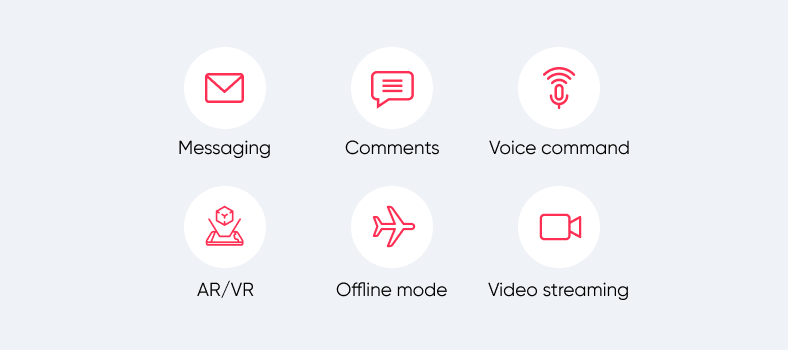
Advanced Features
- In-app messaging. By providing a chatting feature, you simplify the educational process and make your app the only instrument needed for effective online learning. Course participants won’t have to use third-party messengers to consult on emerging issues.
- Comments and forum. It’s better to discuss course tasks right in the app as it puts students and teachers on the same page and saves lots of time for both sides.
- Voice command (AI). You can make the app’s navigation easier for visually impaired users by adding the voice command feature.
- Video streaming. Webinars are becoming more popular,helping students overcome hundreds of miles in several seconds. It’s not a problem to study at the best universities using only a laptop, which makes video streaming one of the most demanded functionalities for edtech solutions.
- Offline mode (lesson downloading). This feature could be particularly important for students living in areas with limited access to the Internet. By downloading a lesson once, a student gets information in full and won’t be distracted by a lagging video.
- AR/VR experience. Extended reality creates immersive worlds that students want to learn and discover. There is no other way to create the most realistic learning experience and look at the studied objects from numerous angles.
At CHI Software, we aim to add the touch of advanced technologies to every product, and e-learning apps are a breeding ground for high-tech creativity.
We have experience in creating AR-based education apps as they are the most engaging for younger students. For example, users can create quizzes for their kids using AR models — any object looks more “alive,” and kids can spin and zoom in on it, unlike images in books.
Technologies to use: ARCore or ARKit (specifically for Apple devices).
If you consider adding augmented reality to the feature list, make sure your target audience uses AR-supported devices:
– For ARCore
– For ARKit
Technology Stack for Educational App Development
The set of technologies needed to create your own educational applications differs significantly depending on the app’s goals, features, and complexity. These are the pillars for your MVP:
iOS
- Programming language: Swift
- Networking: Alamofire
Android
- Programming language: Kotlin
- Networking: OkHttp 3
Backend
- Programming language: Node.js
- Framework: Express 4
- Database: MySQL, MongoDB, Cassandra, HBase
- API: Swagger
Tools
- Signup: Amazon SES, Amazon SNS
- Emails: Elastic Email
- Search: Elasticsearch
- Payment: Braintree and PayPal, E-wallets, Stripe
- Push notifications: Firebase Cloud Messaging (FCM), Twilio, Push.io
- Storage: Amazon S3
How to Create an Educational App in 5 Steps
Where exactly should you start to develop the product of your dreams and fulfill your ideas? No, don’t rush to find a development team immediately— it’s better to spend some time for research and consideration.
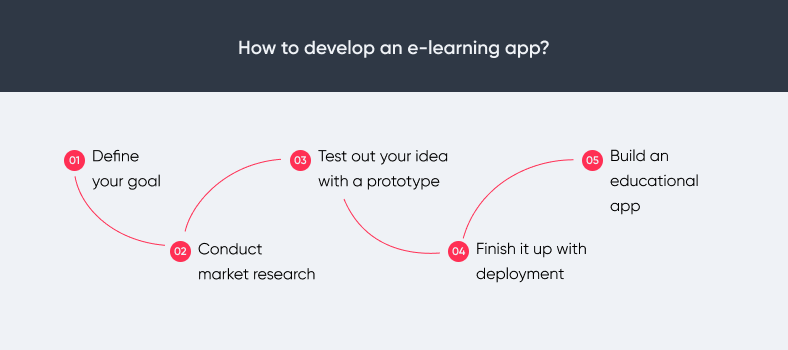
-
Define your goal
Let’s say you like the idea behind edtech solutions, and now you know more about app types and the latest trends. The question is, how are you going to use this knowledge to make a learning app of your own?
First, there should be one specific app idea that aims to solve the customer’s problem. What will it be? Take some time to define what exactly your application is aiming to do. It’s great if you have a team or partner who can help you brainstorm and determine the app development’s goal.
-
Conduct market research
Continue with market research that covers two crucial factors: your target audience and potential competitors.
These are the fundamental factors that identify your target audience:
- Age and gender
- Location
- Education and occupation
- Level of income
After drawing an image of your target customers, you can learn their habits more deeply by reading forums and social media. Subsequently, it will help you figure out what platforms (mobile, desktop, or both) and operating systems (iOS, Android, Windows, or macOS) to use.
As for competitive analysis, start with these points:
- The list of your direct and indirect competitors
- Their main marketing offering
- Monetization strategies
- List of similar and unique features
- Functionality gaps (what you would like to improve)
This market overview will help you frame your idea and find your market niche. In other words, you will create an app that your customers are ready to use, right now.
-
Test out your idea with a prototype
At this stage, you can address a professional team who can quickly build the app’s prototype before developing an educational app. It will make your idea tangible — something that you can show to your target audience and then discuss with marketing and development teams.
Things to consider at this stage:
- Write user tests before the prototype appears in someone’s hands. It will make the testing process more structured and efficient.
- Take into account all user roles: student, tutor, parent, and so on.
- Make sure the interface is understandable for people of different demographics.
This step allows you to improve the app’s concept before development even starts, and you already have feedback from real users in real-life conditions.
-
Build an educational app
Now it’s time to give all documentation to a trusted development team. You can discuss the tech stack, making sure the team has enough tools and expertise to see the work to the end. Under any scenario, a project manager should provide you with a development plan that proves that these experts know how to create a learning app from scratch.
-
Finish it up with deployment
The work doesn’t end with development and testing — any app also goes through the deployment stage.
Here’s what your tech team should take care of:
- Server stress testing. This is a way to check how your app will behave when many people start using your app simultaneously.
- DevOps process. It’s better to set this up in the development stage — it will eventually smooth out release updates.
- Ad-hoc distribution. If your product targets a limited group of people, you should share it using OS-specific methods: via a link (Android) or Mobile Device Management (iOS).
Bonus: Extra Tips to Consider Before Starting the Development Process
Now you know all the basics to determine your idea and start moving ahead in creating your edtech app. But first, we have some more tips that you might not have thought of yet.
- Start simple. It may sound tempting to implement trendy features first, but you always should keep the core ideas in your head. People will come to you for the sake of high-quality content and then stay for something extra. Take care of the roots to grow a healthy tree.
- Use customer journey maps. To do this, you basically draw a navigation plan for each feature during the design stage. It’s a common practice to save time for corrections in the development stage, so consider it when prototyping.
- Prioritize user preferences over your initial ideas. It’s absolutely normal if UX/UI or some features are criticized by users. These comments and remarks are a real hotbed for user-centric development and, subsequently, your business success.
- Continuously test and improve. Never stop following educational trends, user reviews, and competitors’ updates. Any digital environment is extremely dynamic, and e-learning is no exception.
How Much Does It Cost to Create an Education App for iOS or Android?
Every edtech idea demands an individual approach, but we can help you get started by revealing the cost of MVP development.
First, let’s get back to the basic features and their creation.
| Feature | iOS development (hours) | Android development (hours) | Backend development (hours) |
|---|---|---|---|
| Sign-up | 42 | 42 | 47 |
| User profile (dashboard) | 39 | 39 | 59 |
| Search | 21 | 21 | 22 |
| Course (details and creation) | 81 | 81 | 91 |
| Payments | 35 | 35 | 45 |
| Course menu | 95 | 95 | 88 |
| Test creation | 55 | 55 | 79 |
| Push notifications | 14 | 14 | 14 |
| Total | 382 | 382 | 445 |
Now, let’s look at the development process in full. In the next table, we list all development stages and aspects.
| Work to do | iOS development (hours) | Android development (hours) | Backend development (hours) |
|---|---|---|---|
| Project management/BA | 190 | 190 | 162 |
| UX/UI design | 120 | 120 | — |
| Features | 382 | 382 | 445 |
| Admin panel | — | — | 100 |
| Frameworks and libraries incorporation | 20 | 20 | 35 |
| QA and testing | 450 | 450 | 400 |
| DevOps | 70 | 70 | 60 |
| Total | 1232 | 1232 | 1202 |
Here’s a comparison chart of the developer hourly rates depending on different territories according to Clutch:
| Location | Hourly rate, USD |
|---|---|
| United States (New York City) | 100–200 |
| Western Europe (London, UK) | 50–200 |
| Eastern Europe (Ukraine) | 50–100 |
With an average hourly rate of 50–100 USD in Eastern European countries, the app’s cost will likely fall in the following range:

How Can the CHI Software Team Help You Make an Educational Mobile App?
Our team has created several e-learning solutions, both for clients and on the company’s own initiative. The following are just several examples.
Sherlock
Client: CHI Software initiative.
They say you should surround yourself with a foreign language to learn it quickly. CHI Software took this seriously and created an app that immediately translates the names of the objects around you.

The app recognizes your surroundings in real time (indoors or outdoors) using a phone camera and names objects in your native language with a translation.
Technologies: Kotlin, Camera2, TensorFlow, CMake, C/C++, Ruby.
Education Platform for iOS
Client: general education school
While online education is gaining momentum, existing mobile apps can’t keep up with emerging market trends and demands. We created a collaborative solution to organize school projects and allow teachers and students to communicate freely within the app.
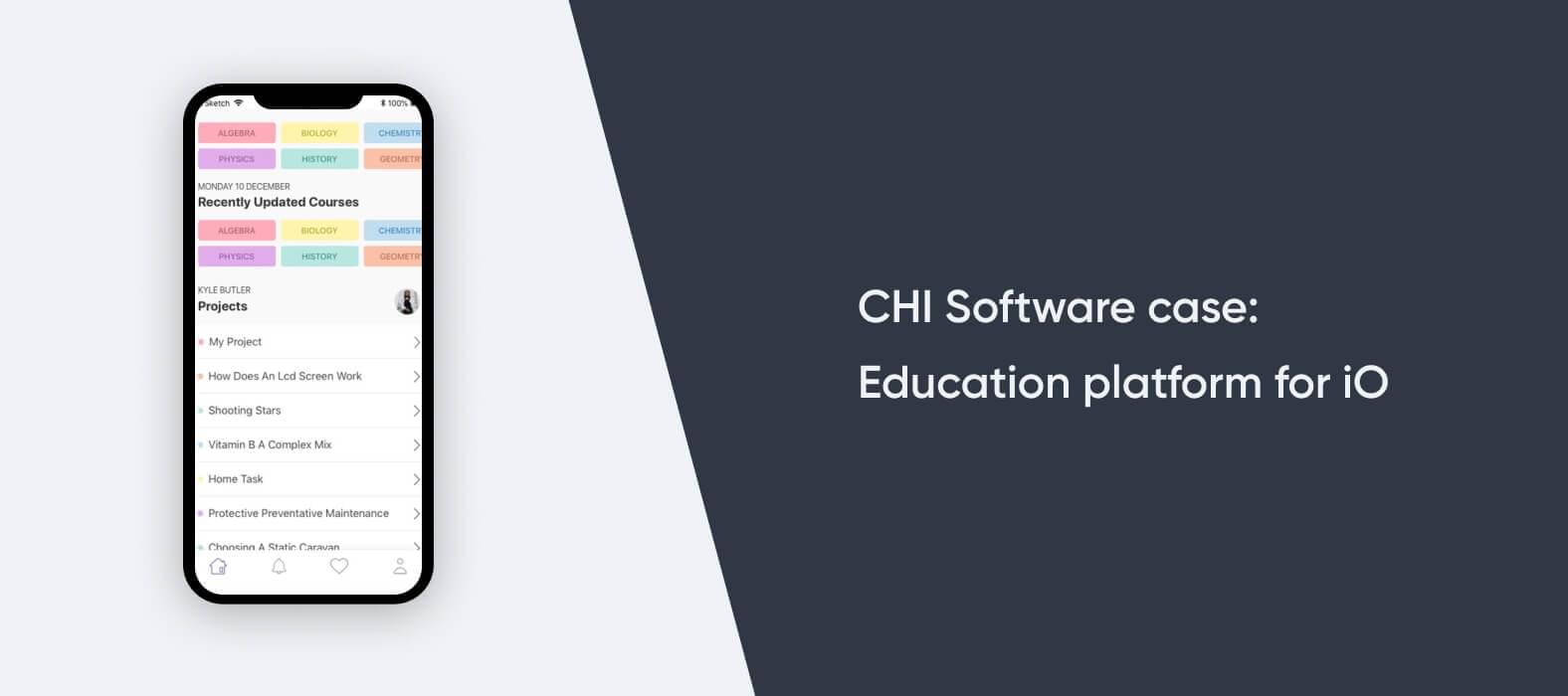
Features for tutors include class and assignments creation, group management, and student activity monitoring. Students can exchange and publish content of any type (text, images, video, and audio).
Technologies: Objective-C, xCode, xCode Tools, Foundation, UI Kit, Core Graphics, Core Text, CF Network, Fabric, Mobile Core Services, Quartz Core, Security, System Configuration, Facebook SDK, Crashlytics, XML, JSON, HTTP, HTTPS, GIT, Hockeyapp.
Educational Solution for Elementary School
Client: junior high school located in Sweden
Our client needed a custom educational tool to provide basic knowledge to junior high students both on mobile and desktop.

We created a website along with iOS and Android apps that help teachers to organize an educational process according to the program, set up remote teaching, and engage students in learning math, reading, writing, etc.
Technologies: React, Redux, React Native, Next, Node, Express, Firebase, Mixpanel.
Conclusion
Our journey is coming to an end, and here’s what you can take with you:
- The global pandemic gave an extra push to the e-learning industry and raised its expected rate of growth.
- Extended reality is the industry’s leading trend that will become even more popular in educational app development.
- Learning management systems have become a lifebuoy for remote education.
- There are at least five ways to monetize an e-learning mobile app (and even more if you combine them).
- Eight features are enough to build up a high-quality educational MVP.
- It’s better to collaborate with a team that knows how to develop an educational app similar to your core business idea.
- Prototyping beforehand is one of the best ways to ensure the app’s quality at an early stage.

Polina is a curious writer who strongly believes in the power of quality content. She loves telling stories about trending innovations and making them understandable for the reader. Her favorite subjects include AI, AR, VR, IoT, design, and management.
